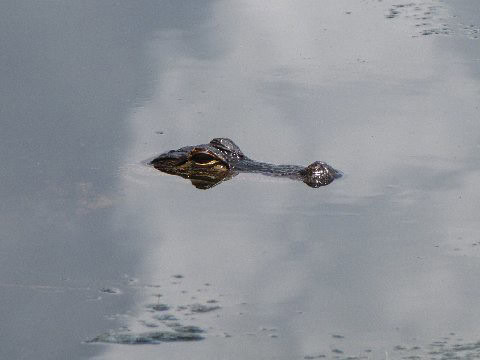When winter temperatures plummet across the southern United States, a remarkable survival strategy unfolds beneath the surface of frozen lakes and ponds. American alligators, those prehistoric-looking reptiles that have roamed Earth for millions of years, showcase one of nature’s most fascinating adaptations. Unlike their warm-weather reputation might suggest, these resilient creatures don’t simply disappear when ice forms above them. Instead, they employ a series of physiological and behavioral adaptations that allow them to survive conditions that would be fatal to many other animals. This phenomenon, often captured in viral photos showing alligator snouts protruding through icy surfaces, demonstrates the remarkable resilience these ancient reptiles have developed throughout their evolutionary history.
The Brumation Process: Alligators’ Winter Survival Strategy
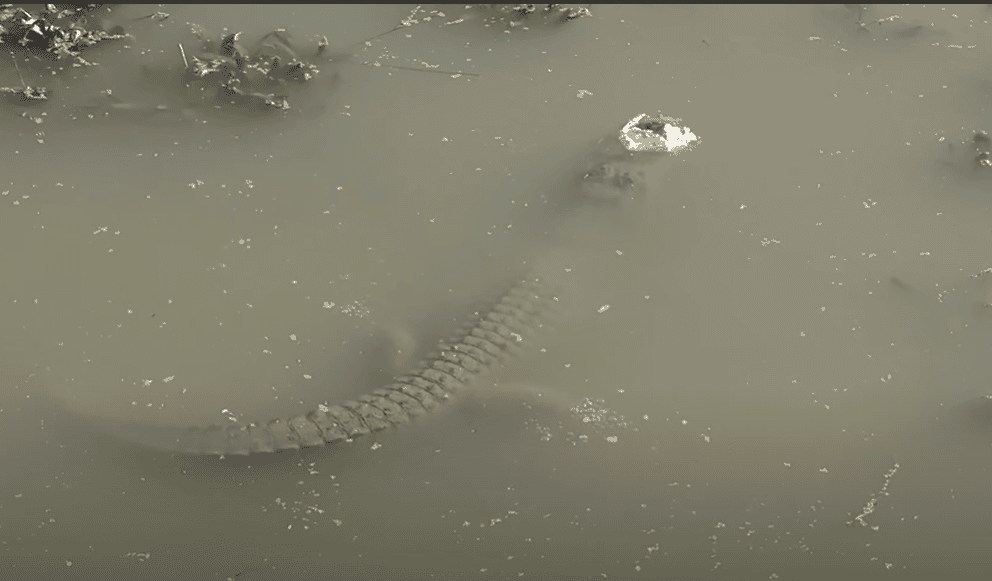
Unlike mammals that hibernate, alligators enter a state called brumation during cold weather periods. Brumation is a reptile-specific dormancy period that involves significantly reduced metabolic activity. During brumation, alligators become lethargic, their heart rate slows dramatically, and their digestive system essentially shuts down. This physiological state allows them to survive extended periods without food, as their energy requirements drop to minimal levels. While similar to hibernation, brumation differs in several key ways, particularly in that reptiles don’t enter the deep sleep state that mammals do, and they may occasionally become active during warmer days, even in winter. This adaptive process is crucial for cold-weather survival in ectothermic (cold-blooded) creatures like alligators.
The “Snorkeling” Phenomenon
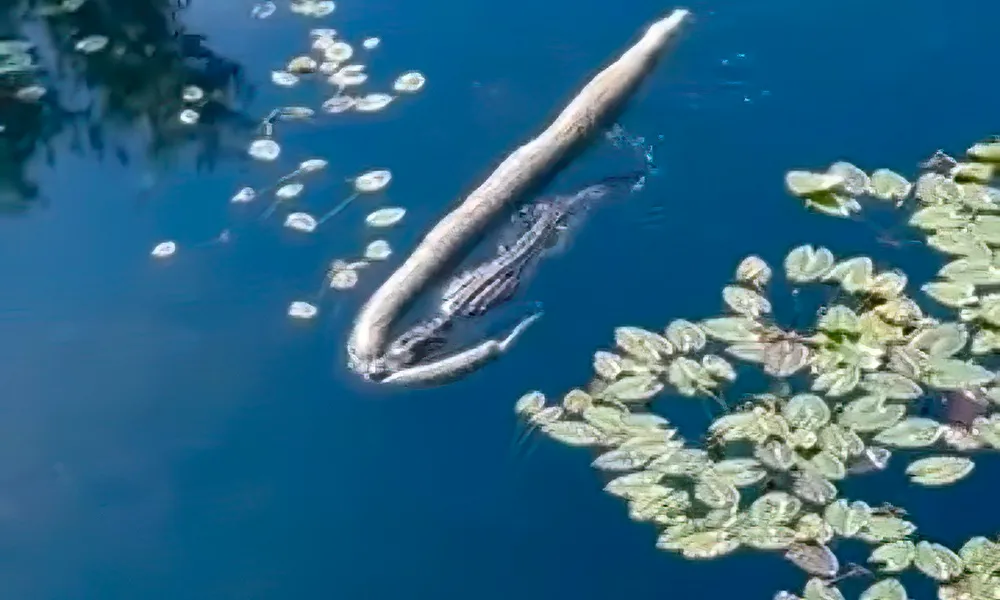
One of the most visually striking survival behaviors alligators display during freezing conditions is known colloquially as “snorkeling.” When water bodies begin to freeze over, alligators position themselves with just their snouts breaking the surface of the water before it freezes completely. This creates the surreal sight of alligator nostrils protruding through ice sheets. This strategic positioning allows them to continue breathing air while the rest of their body remains in the slightly warmer water below. The behavior was famously documented at North Carolina’s Shallotte River Swamp Park in 2018 and 2019, when photographs of alligators with just their snouts above ice went viral on social media. This remarkable adaptation ensures they maintain access to oxygen while minimizing exposure to freezing air temperatures.
Cold Temperature Tolerance in Alligators
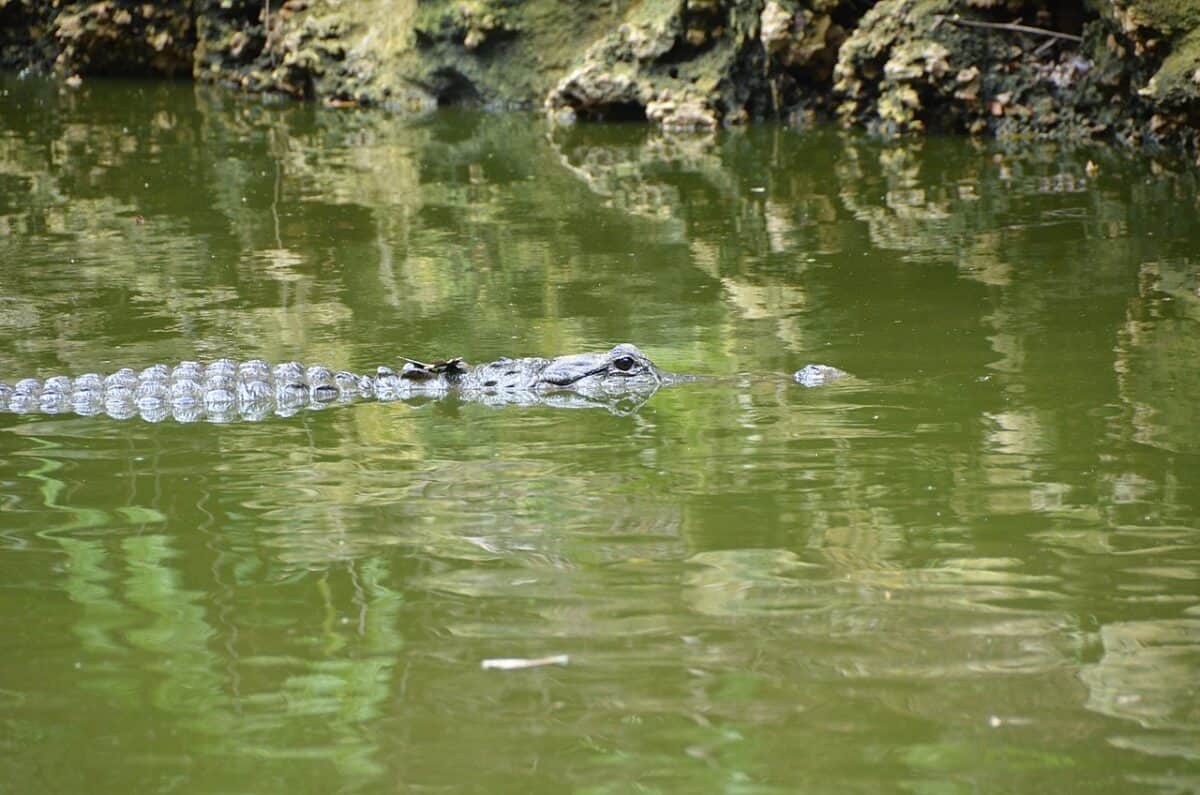
American alligators possess a surprising tolerance for cold temperatures that far exceeds what many people assume. These reptiles can remain active in water temperatures as low as 40°F (4°C) and can survive brief periods when water temperatures drop even lower. Their ability to endure cold is particularly remarkable given their reptilian physiology. Unlike mammals and birds that maintain constant internal temperatures, alligators are ectotherms whose body temperature fluctuates with their environment. Their cold tolerance has geographic implications too—while most abundant in Florida and Louisiana, alligators’ range extends as far north as North Carolina, where freezing temperatures are more common. This cold hardiness represents millions of years of evolutionary adaptation to seasonal temperature fluctuations in their native habitats.
Metabolic Adjustments During Cold Periods

When confronted with freezing conditions, alligators undergo dramatic metabolic changes that enable survival. Their heart rate can decrease to just 1-2 beats per minute in extreme cold—a tiny fraction of their normal 30-40 beats per minute in warm conditions. Breathing rates similarly plummet, with alligators sometimes going 4-5 hours between breaths during the coldest periods. Their digestive system essentially shuts down, allowing them to go months without eating. Blood flow is redirected to vital organs, while peripheral circulation reduces to minimize heat loss. These physiological adjustments allow alligators to survive on minimal energy reserves throughout winter. The extreme metabolic suppression represents one of the most profound examples of physiological adaptation in the animal kingdom, rivaling even the impressive hibernation abilities of mammals like bears.
Frozen but Alive: The Science of Cold Immobility
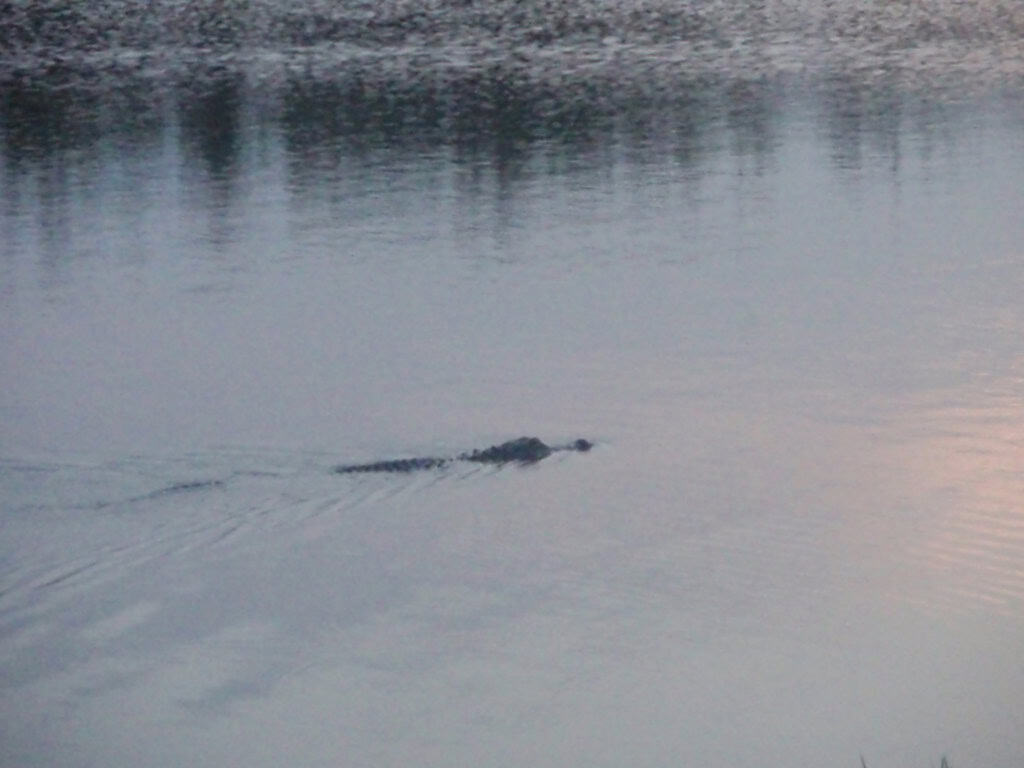
When trapped beneath ice, alligators enter a state that researchers describe as “frozen but alive.” Their bodies become almost completely immobile, yet vital functions continue at minimal levels. Unlike some cold-adapted animals that produce specialized antifreeze proteins, alligators rely primarily on behavioral adaptations and extreme metabolic suppression. Their cold immobility is reversible—once temperatures rise, alligators gradually return to normal activity levels without permanent damage. This remarkable ability stems from specialized cellular mechanisms that protect tissues during prolonged cold exposure. Research into these mechanisms continues to fascinate biologists studying cold adaptation. The alligator’s ability to survive temporary freezing represents one of the most extreme examples of cold tolerance among large vertebrates, highlighting the effectiveness of their evolutionary adaptations.
Geographic Distribution and Cold Adaptation

The American alligator’s range extends from the southeastern tip of Texas to coastal North Carolina, covering diverse climatic conditions. Northern populations have developed enhanced cold tolerance compared to their southern counterparts. Alligators in North Carolina and northern Georgia routinely face freezing conditions that Florida alligators rarely encounter. These northern populations display subtle physiological differences that improve cold survival, including slightly different brumation behaviors and potentially enhanced metabolic adjustments. Despite these adaptations, there are clear northern limits to alligator distribution, defined largely by winter temperature extremes. Climate change may be gradually shifting these boundaries northward as winters become milder in some regions. The varying cold adaptations across different geographic populations demonstrate the species’ evolutionary responsiveness to local environmental conditions.
The Crucial Role of Thermal Inertia
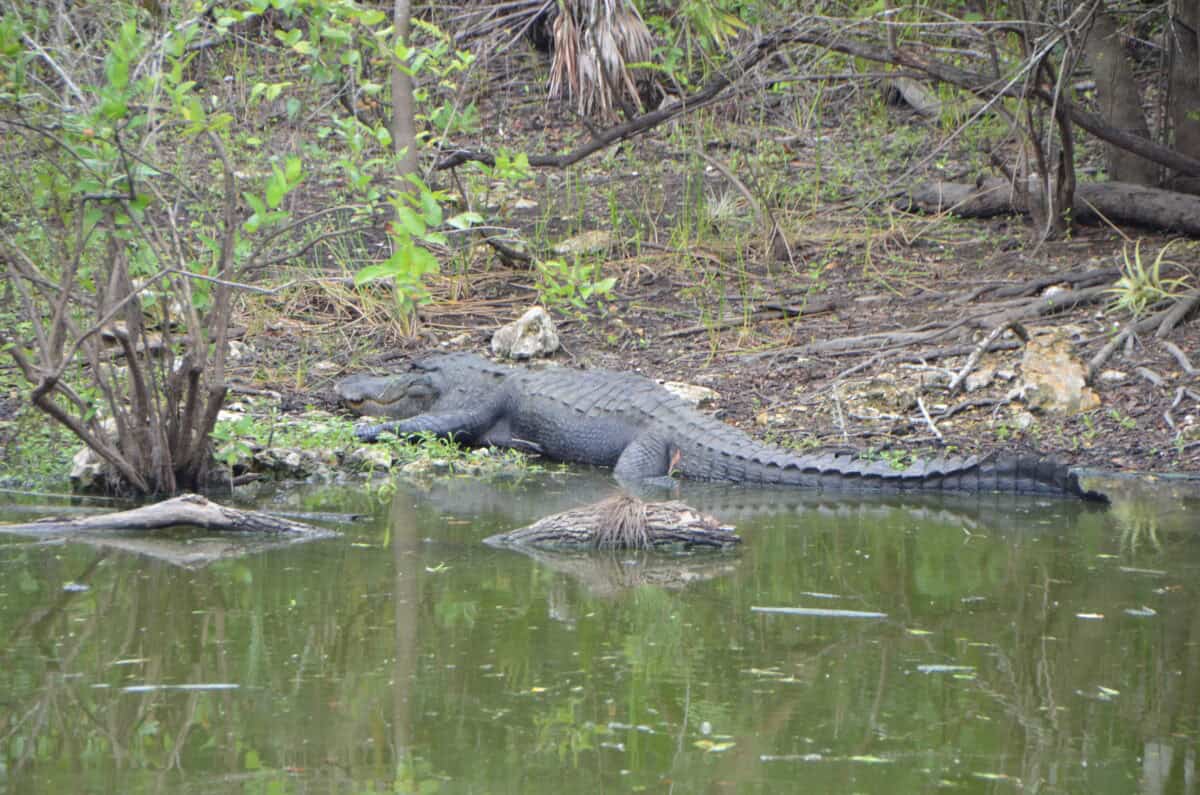
Water’s high thermal inertia—its resistance to temperature change—plays a crucial role in alligator winter survival. Even as air temperatures plummet below freezing, water bodies cool much more slowly. The bottom of lakes and ponds typically remains several degrees warmer than surface water, creating thermal refuges where alligators can position themselves during the coldest periods. In larger, deeper water bodies, bottom temperatures may remain above 50°F (10°C) even when surface ice forms. Alligators instinctively seek out these warmer microhabitats, sometimes concentrating in large numbers around springs or other warm spots. This strategic use of thermal gradients demonstrates the sophisticated environmental awareness that helps alligators survive challenging conditions. Their ability to locate and utilize these thermal refuges represents a behavioral adaptation as important as their physiological ones.
Oxygen Requirements During Brumation

While in brumation beneath ice, alligators maintain minimal oxygen requirements that they can satisfy through several pathways. Their dramatically reduced metabolic rate means oxygen demands drop to just a fraction of normal levels. When possible, they position their nostrils above water to breathe air, as seen in the famous “snorkeling” behavior. However, when completely submerged under ice for extended periods, alligators can absorb some oxygen directly from the water through specialized blood vessels in their mouth and cloaca—a process called cloacal respiration. Though less efficient than lung breathing, this supplementary oxygen absorption helps sustain them during periods when they cannot access air. Additionally, their exceptional tolerance for anaerobic metabolism allows them to function briefly with little to no oxygen, though this creates metabolic waste products that must eventually be cleared when normal breathing resumes.
Den Selection and Preparation for Winter

As temperatures begin to drop in late autumn, alligators engage in strategic den selection that proves critical for winter survival. They create or select underwater holes in banks, often called “gator holes,” that provide shelter and relatively stable temperatures. In preparation for winter dormancy, alligators may enlarge these dens by clearing vegetation and mud. Some alligators have been observed returning to the same winter dens year after year, suggesting they remember successful shelters. During particularly harsh winters, multiple alligators may share the same den, sometimes tolerating close proximity despite their normally territorial nature. This den-sharing behavior is more common in northern populations where winter survival pressures are strongest. The careful selection and preparation of winter dens represents an important behavioral adaptation that complements their physiological cold-survival mechanisms.
Recovery After Freezing Conditions

When waters begin to thaw after a freezing period, alligators undergo a remarkable recovery process. As temperatures rise, their metabolic rate gradually increases, heart rate accelerates, and normal breathing patterns resume. Blood circulation intensifies, delivering oxygen and nutrients to tissues that have been functioning at minimal levels. This reanimation process isn’t instantaneous—it may take several days of warming before alligators resume normal activity levels. Once fully warmed, they typically experience intense hunger after months without feeding, leading to increased hunting activity in early spring. Despite the physiological stresses of extended cold periods, healthy alligators typically show no lasting negative effects from their frozen state. Their bodies efficiently clear accumulated waste products and repair any minor tissue damage that occurred during brumation. This resilient recovery ability further demonstrates why alligators have survived as a species for millions of years through numerous climate shifts.
Differences Between Juvenile and Adult Cold Tolerance

Age and size significantly influence an alligator’s ability to survive freezing conditions. Adult alligators, with their larger body mass, retain heat longer and have greater energy reserves to sustain them through winter. Juveniles, with smaller bodies and proportionally greater surface area, cool more quickly and have fewer fat reserves. This size disadvantage makes young alligators more vulnerable during extended cold periods. Research indicates that juvenile mortality increases significantly during unusually harsh winters, particularly in the northern parts of their range. Younger alligators also have less experience selecting appropriate winter dens and may choose less protected locations. Despite these challenges, enough juveniles survive even in northern populations to maintain stable population growth. The differential survival rates between age classes represents an important selective pressure that has likely shaped the evolution of cold tolerance in the species over millions of years.
The American alligator’s ability to survive in frozen lakes represents one of nature’s most remarkable examples of cold adaptation in large reptiles. Through a combination of physiological transformations, behavioral strategies, and environmental awareness, these ancient creatures have developed survival mechanisms that allow them to endure conditions seemingly at odds with their reptilian nature. From their fascinating “snorkeling” technique to their profound metabolic suppression during brumation, alligators demonstrate evolutionary adaptations refined over millions of years. As climate patterns continue to change, these adaptations may become even more crucial for alligator populations at the northern edges of their range. The next time you see a seemingly bizarre photo of alligator snouts protruding through ice, remember that you’re witnessing not just a strange sight, but a sophisticated survival strategy developed through countless generations of evolutionary pressure.
- The Coldest Town in America—And How People Survive There - August 9, 2025
- How Some Birds “Steal” Parenting Duties From Others - August 9, 2025
- 12 Deep-Sea Creatures You Won’t Believe Exist - August 9, 2025

